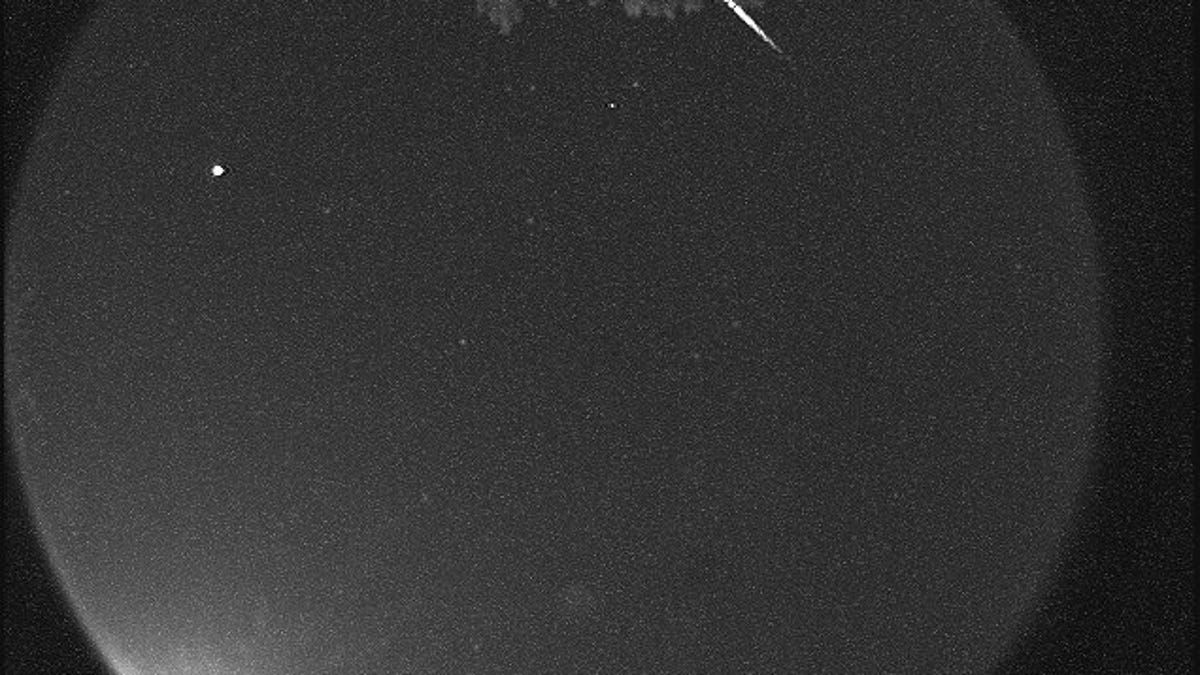Draconid meteors and a comet breathe fire into the sky
The big show this weekend could be above us, as a potentially explosive meteor shower and a newfound comet blaze trails across the night sky.

A Draconid streaks the Canadian skies.
This weekend you can watch celestial dragons spitting fireballs and a newfound comet blazing its own path across the night sky.
Both the peak of the Draconid meteor shower (also called the Giacobinids) and the drably-named but brightly shining Comet C/2017 O1 ASAS-SN will be visible in the evening on October 8.
The comet was spotted for the first time by the All-Sky Automated Survey for Supernovae (ASAS-SN) in July and has since brightened drastically and moved to its current position in the sky in the direction of the constellation Perseus, ideal for viewing from the northern hemisphere. It should be visible with a good pair of binoculars or a backyard telescope.
To spot it, use this sky map to know where to point your lenses and look for a light that is a little softer and more fuzzy than a star, perhaps with a little bit of a tail.
#Comet C/2017 O1 (ASASSN) alongside the Northern Trifid nebula (NGC 1579) on Oct 2nd. https://t.co/eaVq6pRTNF pic.twitter.com/cr3tq4Hq6H
— Damian Peach (@peachastro) October 7, 2017
No binoculars are needed to spot the "shooting stars" that will be spit from the mouth of the constellation Draco the Dragon this weekend, though. The Draconids come from the debris trail left in our cosmic neighborhood by the comet 21P Giacobini-Zinner.
Since our whole planet is passing through that cloud right now, you don't actually have to look in the direction of Draco to see the meteors. Instead, just head outside from anywhere that's as dark as possible, let your eyes adjust then just lay back and look straight up at the night sky.
Unlike many meteor showers, the Draconids should actually be more visible in the evening before midnight, so no need to stay up all night or get up before dawn.
Typically, the Draconids aren't the most prolific shower, often yielding just a handful of streaking meteors per hour, but every now and then we get what the American Meteor Society calls a "Draconid Outburst" of up to several hundred shooting stars per hour. Although no such outburst is predicted this year, they are not always predictable and can be fantastic when they happen.
An article in Popular Astronomy described the outburst in 1933 as "one of the most spectacular meteoric showers of modern times" during which "the meteors were falling as thickly as the flakes of snow in a snow storm." One observer was said to estimate "that at the maximum 100 meteors appeared in five seconds."
Should you happen to capture a photo of anything spectacular in the sky, don't forget to share it with me on Twitter @EricCMack.
Crowd Control: A crowdsourced science fiction novel written by CNET readers.
Solving for XX: The tech industry seeks to overcome outdated ideas about "women in tech."

